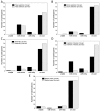Management of hearing aid assembly by urban-dwelling hearing-impaired adults in a developed country: implications for a self-fitting hearing aid
- PMID: 22200734
- PMCID: PMC4040839
- DOI: 10.1177/1084713811431694
Management of hearing aid assembly by urban-dwelling hearing-impaired adults in a developed country: implications for a self-fitting hearing aid
Abstract
A self-fitting hearing aid, designed to be assembled and programmed without audiological or computer support, could bring amplification to millions of people in developing countries, who remain unaided due to the lack of a local, professional, audiological infrastructure. The ability to assemble and insert a hearing aid is fundamental to the successful use of a self-fitting device. In this study, the management of such tasks was investigated. Eighty older, urban-dwelling, hearing-impaired adults in a developed country were asked to follow a set of written, illustrated instructions to assemble two slim-fit behind-the-ear hearing aids. Participants were allowed to access assistance with the task from an accompanying partner. A range of personal and audiometric variables was measured through the use of structured questionnaires and standardized tests of health literacy, cognitive function, and manual dexterity. The results showed that 99% of participants were able to complete the hearing aid assembly task, either on their own or with assistance. Health literacy, or the ability to read and understand health-related text, and gender most strongly influenced participants' ability to complete the assembly task independently and accurately. Higher levels of health literacy were associated with an increased likelihood of independent and successful task completion. Male participants were more likely to complete the task on their own, while female participants were more likely to assemble the device without errors. The results of this study will inform future work regarding development of educational material for the self-fitting hearing aid as well as candidacy for such a device.
Conflict of interest statement
Figures



Similar articles
-
Perception of a self-fitting hearing aid among urban-dwelling hearing-impaired adults in a developed country.Trends Amplif. 2011 Dec;15(4):175-83. doi: 10.1177/1084713811424886. Epub 2011 Nov 10. Trends Amplif. 2011. PMID: 22079900 Free PMC article.
-
Assembly and insertion of a self-fitting hearing aid: design of effective instruction materials.Trends Amplif. 2011 Dec;15(4):184-95. doi: 10.1177/1084713811430837. Epub 2012 Mar 2. Trends Amplif. 2011. PMID: 22389434 Free PMC article. Review.
-
Hearing-aid assembly management among adults from culturally and linguistically diverse backgrounds: toward the feasibility of self-fitting hearing aids.Int J Audiol. 2013 Jun;52(6):385-93. doi: 10.3109/14992027.2013.773407. Epub 2013 Mar 11. Int J Audiol. 2013. PMID: 23473328
-
Evaluation of the Self-Fitting Process with a Commercially Available Hearing Aid.J Am Acad Audiol. 2017 Feb;28(2):109-118. doi: 10.3766/jaaa.15076. J Am Acad Audiol. 2017. PMID: 28240978
-
Evidence on self-fitting hearing aids.Trends Amplif. 2011 Dec;15(4):215-25. doi: 10.1177/1084713812444009. Epub 2012 Apr 23. Trends Amplif. 2011. PMID: 22528820 Free PMC article. Review.
Cited by
-
Connected Audiological Rehabilitation: 21st Century Innovations.J Am Acad Audiol. 2015 Oct;26(9):768-76. doi: 10.3766/jaaa.14062. J Am Acad Audiol. 2015. PMID: 26415970 Free PMC article. Review.
-
Disruptive Hearing Technologies and Mild Sensorineural Hearing Loss I: Accessibility and Affordability Issues.Semin Hear. 2018 May;39(2):135-145. doi: 10.1055/s-0038-1641740. Epub 2018 Jun 15. Semin Hear. 2018. PMID: 29915451 Free PMC article. Review.
-
Exploring the health literacy status of people with hearing impairment: a systematic review.Arch Public Health. 2023 Nov 22;81(1):206. doi: 10.1186/s13690-023-01216-x. Arch Public Health. 2023. PMID: 37993969 Free PMC article.
-
Perception of a self-fitting hearing aid among urban-dwelling hearing-impaired adults in a developed country.Trends Amplif. 2011 Dec;15(4):175-83. doi: 10.1177/1084713811424886. Epub 2011 Nov 10. Trends Amplif. 2011. PMID: 22079900 Free PMC article.
-
Self-Fitting Hearing Aids: Status Quo and Future Predictions.Trends Hear. 2016 Apr 12;20:2331216516643284. doi: 10.1177/2331216516643284. Trends Hear. 2016. PMID: 27072929 Free PMC article. Review.
References
-
- Brooks D. N. (1985). Factors relating to the under-use of postaural hearing aids. British Journal of Audiology, 19, 211-217 - PubMed
-
- Buchbinder R., Hall S., Youd J. M. (2006). Functional health literacy of patients with rheumatoid arthritis attending a community-based rheumatology practice. Journal of Rheumatology, 33, 879-886 - PubMed
-
- Dillon H. (2001). Hearing aids. Sydney, Australia: Boomerang Press
Publication types
MeSH terms
LinkOut - more resources
Full Text Sources
Other Literature Sources
Medical
Research Materials
